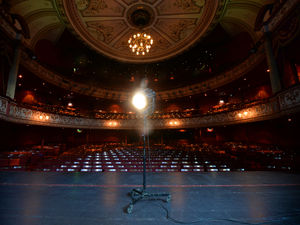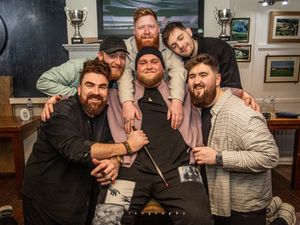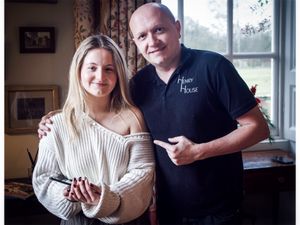Charity at the heart of Freemasonry in Shropshire
With roots going back to the medieval period and the traditions of the craftsmen who built the era’s castles, cathedrals and other centres of worship, Freemasonry stands as one of the world’s oldest social organisations.
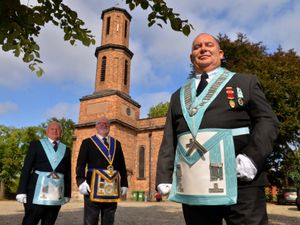
Part of a global society built around the guiding principles of integrity, friendship, respect and charity, members of Masonic lodges across the UK band together in a spirit of fellowship, self-improvement and outreach. Charitable work is a cornerstone of what it means to be a Freemason, with the organisation working proudly to support worthy causes on an international, national and local level. And in Shropshire, said work has been making waves for some time.
“There are about 200,000 Freemasons in England and Wales, about 1,200 of us in Shropshire,” said Stephen Rogers, Communications Officer for Shropshire Freemasons. We’re formed into 36 individual lodges. They vary in strength between about 35 and 60 members. Each of those lodges has a provision whereby when you sign up to be a Freemason you will make such regular donations to charity as you can afford, and these are directed through the Shropshire Masonic Charitable Association (SMCA).
“Every lodge will make a contribution towards the association, as well as making individual and separate lodge donations. A portion of what we pay as our membership fee to our lodges also goes to the nationally-run Masonic Charitable Foundation, which will pool and donate national funding to worthy community causes.”
Last year, the lodges of Shropshire were responsible for an impressive collective donation that directly benefitted a large number of causes that operate in the area. In all, through a combination of donations by the SMCA, the Masonic Charitable Foundation and individual lodges, Shropshire Freemasons donated £75,000 to local causes.
“During 2022, £36,400 was distributed by the SMCA to 36 locally-based charities,” said Stephen. “They ranged from causes like Hope House Children’s Hospice to smaller charities like The Harry Johnson Trust. £10,000 was specifically given to the Shrewsbury Food Hub.
"Shropshire Freemasons have been supporting them a lot, particularly during the pandemic when the distribution of food to people was becoming really critical. One lodge gave enough funding for them to buy a minibus.
"In Shropshire in particular, we are also big supporters of a scheme called Teddies For Loving Care. For a number of years now around the country, Freemasons have been providing teddy bears to children who are taken into hospital. The scheme didn’t start here in Shropshire, but we are particularly enthusiastic supporters of it.
"Children are often frightened when they go into hospital, and through the Teddies For Loving Care appeal, we provide the emergency departments at the hospitals in Shrewsbury, Telford and Gobowen as well as Hope House Hospice with teddy bears that can give them a bit of comfort. The feedback that we get is brilliant – it is hugely appreciated by the hospitals, the children and their families.”
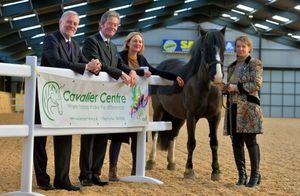
With Freemasonry also supporting organisations such as The British Red Cross with important international initiatives (re-uniting Ukrainian families and an emergency grant to the Turkish earthquake appeal being recent and poignant examples), charitable work at every level is at the heart of Masonic life.
Yet it is a spirit of fraternity – and now, sorority – across the organisation that drives this passion for good work.
“There’s a feeling of togetherness that you get from Freemasonry that is not always easy to find anywhere else,” said Stephen. “We tend to meet in the evenings, six to eight times a year. The meeting will consist firstly of a business part, and this will include the ceremonial stuff, where new people might come in or existing lodge members will ascend to different levels of masonry.”
It is here of course that Freemasonry’s somewhat fabled traditions – including the infamous Masonic handshake – come into play. “Freemasonry has got its roots in medieval stonemasonry,” explained Stephen. “Centuries ago, masons would travel from place to place building cathedrals, castles, great houses, etc, and in their line of work they used a system of progression and recognition that we use today.
“Stonemasons would begin their career as an apprentice. Once they had served their time and learned their skills they would become a bit more experienced, ascending to the level of ‘craftsman’. And after a year or two of that, they would eventually become a master mason.
"Accomplished master stonemasons had very special ways of doing things, and they would not necessarily want those below them to know the secrets of their techniques before they had served their time as this might mean their skills would become less prized. This is where the history of the Masonic handshake comes from. Stonemasons would use certain handshakes between each other to indicate their level of expertise, and we use this tradition for our members to identify their level as a Freemason.
“Our different handshakes are the only things in Freemasonry that, in theory, aren’t now open for discussion in public. But they are only used inside lodge rooms and are only part of the short ceremonial side of what we do.”
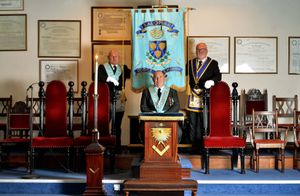
The traditions of Freemasonry may have relaxed somewhat over time, but the core philosophies behind the organisation stand strong. When new members are admitted to a lodge, it is around these guiding values that their pledge is made.
“When you join the Freemasons you undertake to be a good person, to improve yourself and to help other people improve themselves,” said Stephen. “This is part of the ceremony for new members and has been for centuries. The meeting will then, however, move on – there might then be a talk about an aspect of Freemasonry or on another subject – and then there’s a sit-down meal. Lodge members will chat, have a beer or a glass of wine, and there is a great deal of fun and fellowship. Nobody takes themselves too seriously, and we don’t discuss or debate politics and religion.”
And as Stephen relates, the organisation is no longer restricted to male-only membership. “There are women’s Masonic lodges,” he said. “There are two umbrella organisations run from London for women Freemasons and they are hugely active. They are exactly the same in terms of their ethos and they do the same work, but they have women members. So any woman who is interested in Freemasonry can find out about it and can join it – there are women’s lodges around the country, including those operating in Shropshire, which are enthusiastically and fully supported.”
Indeed, Freemasonry membership in the modern day is not restrictive by design, with the organisation priding itself on bringing people together irrespective of their race, religion or other perceived differences that can lead to division. What seems to matter is simply having the right attitude.
“We have members from every occupation, or none at all,” said Stephen. “And the great thing is, if you asked me – and I’ve been in my lodge now since 1985 – I’m not sure I could actually tell you what everybody did for a living. It just doesn’t come up and isn’t about any differences between us on that score. Lodges are full of members from different backgrounds who are united because they want to do some good and benefit each other and the community. “For anybody who is generally interested, basically all you have to be is somebody who feels that they want to be involved in doing something with other people, for other people, that involves enjoying yourself at the same time. That is what Freemasonry is all about.”


